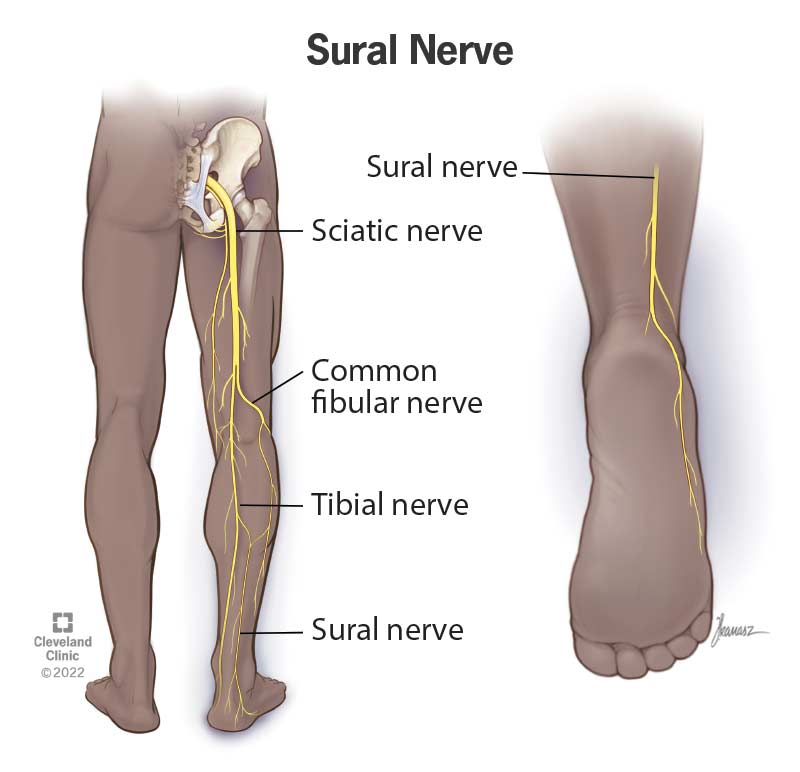Your sural nerve is just below your skin’s surface in the back of your lower leg (calf). It enables you to detect foot position and sensations, including touch, temperature and pain. Your sural nerve can help diagnose and treat complex nerve issues.
Advertisement
Cleveland Clinic is a non-profit academic medical center. Advertising on our site helps support our mission. We do not endorse non-Cleveland Clinic products or services. Policy

Your sural nerve is below your skin’s surface in the back of your lower leg (calf). It’s part of your peripheral nervous system, which helps your brain communicate with the rest of your body.
Advertisement
Cleveland Clinic is a non-profit academic medical center. Advertising on our site helps support our mission. We do not endorse non-Cleveland Clinic products or services. Policy
Your sural nerve is a sensory nerve that enables you to detect:
Your sural nerve provides skin sensation to the:
Your sural nerve allows you to feel sensation and contributes to maintaining balance while on your feet. It can also serve as donor tissue to diagnose and repair other nerve disorders. These include:
A biopsy is a tissue sample that healthcare providers examine in a lab for signs of nerve disease. Your sural nerve is used because it lies close to your skin’s surface and is easy to find. It also heals well after surgery, with few — if any — complications.
You may need a sural nerve biopsy if you’re are showing signs of:
A nerve graft uses healthy tissue to repair or replace damaged nerves. Healthcare providers use your sural nerve because it provides a long tissue sample.
A sural nerve graft can be attached elsewhere within your body to relieve:
Advertisement
Your sural nerve starts in areas of your upper calf where two nerves join. It travels down the back outer part of your leg, curves at your ankle and ends before your toes.
The two nerves that contribute to the formation of your sural nerve are your:
Your sural nerve contains tiny, string-like fibers (axons). A fatty substance, myelin, binds them together into nerve bundles. These bundles travel up your body to connect to your spinal cord. This network of nerve tissue makes it possible for nerve signals to travel quickly to and from your brain.
Conditions affecting this nerve include:
Steps you can take to care for your sural nerve include:
You should call your healthcare provider if you experience discomfort in your lower leg or the top outside of your foot.
Symptoms may include:
Your sural nerve is part of your peripheral nervous system. It provides sensation to your lower leg and parts of your foot. Many health conditions can affect your nerve, including diabetes and sports injuries. Your sural nerve’s length and ability to regenerate make it ideal for a sural nerve biopsy or graft. If you experience sural nerve pain, it’s important to see your healthcare provider.
Advertisement
If you have a neurological condition, you want expert advice. At Cleveland Clinic, we’ll work to create a treatment plan that’s right for you.

Last reviewed on 01/18/2022.
Learn more about the Health Library and our editorial process.